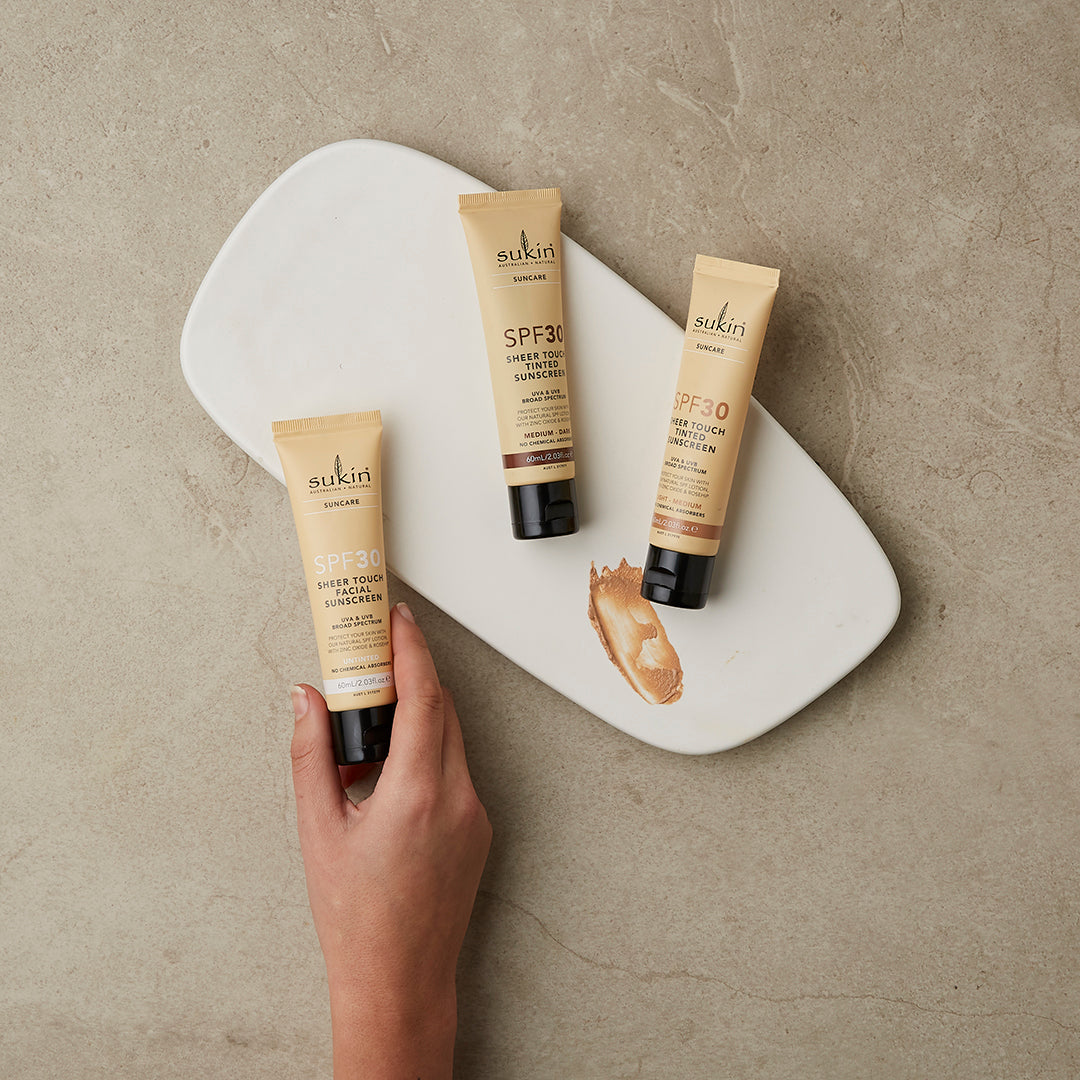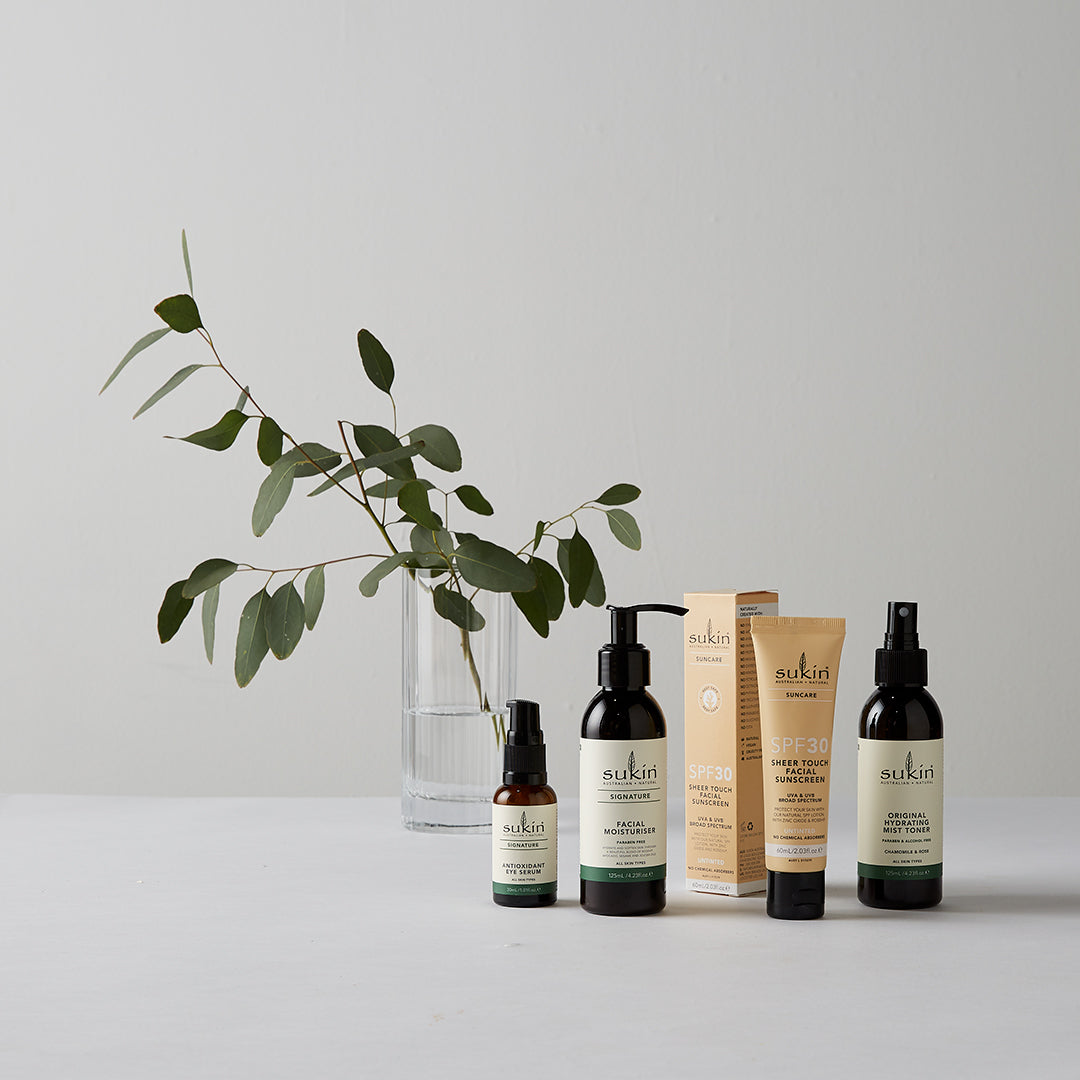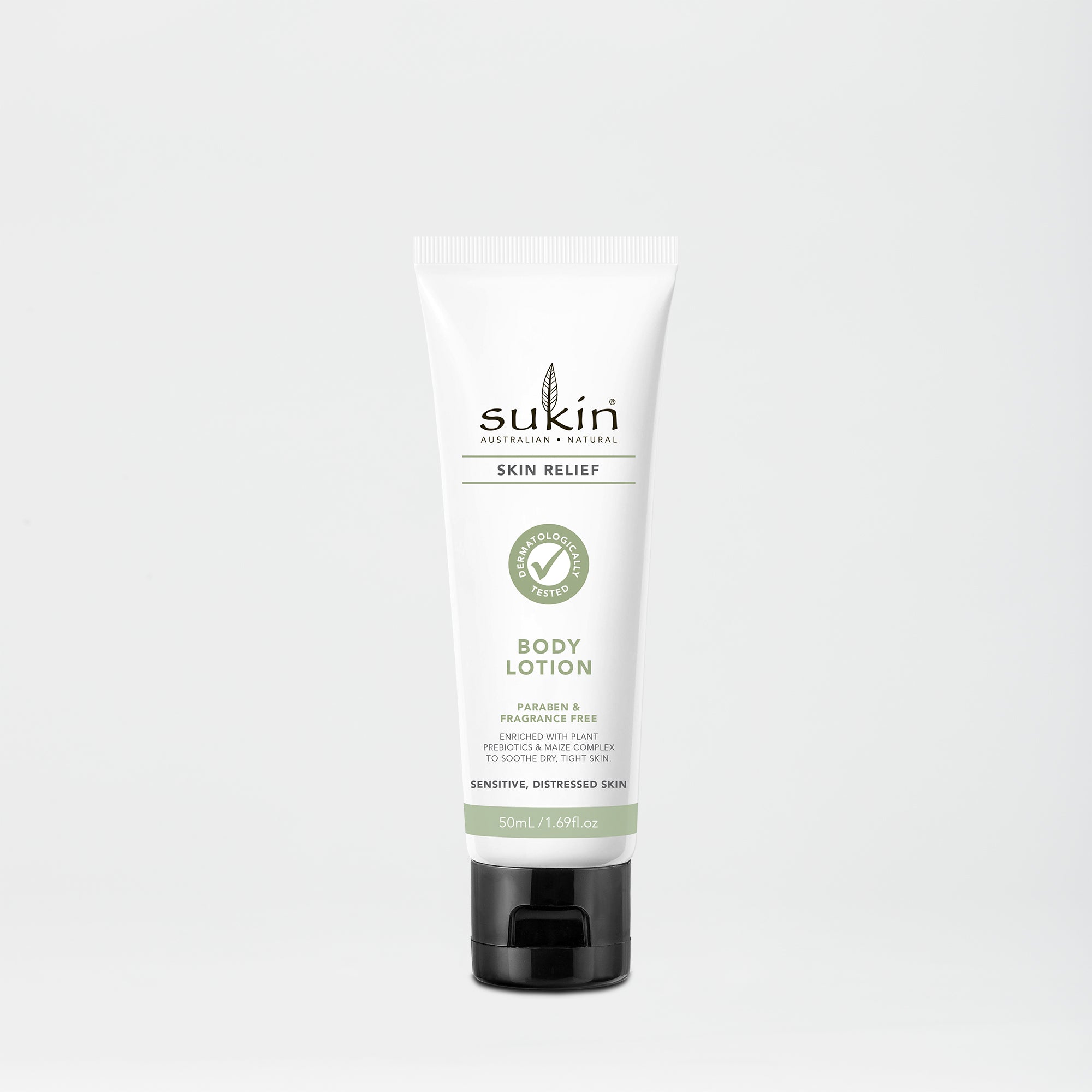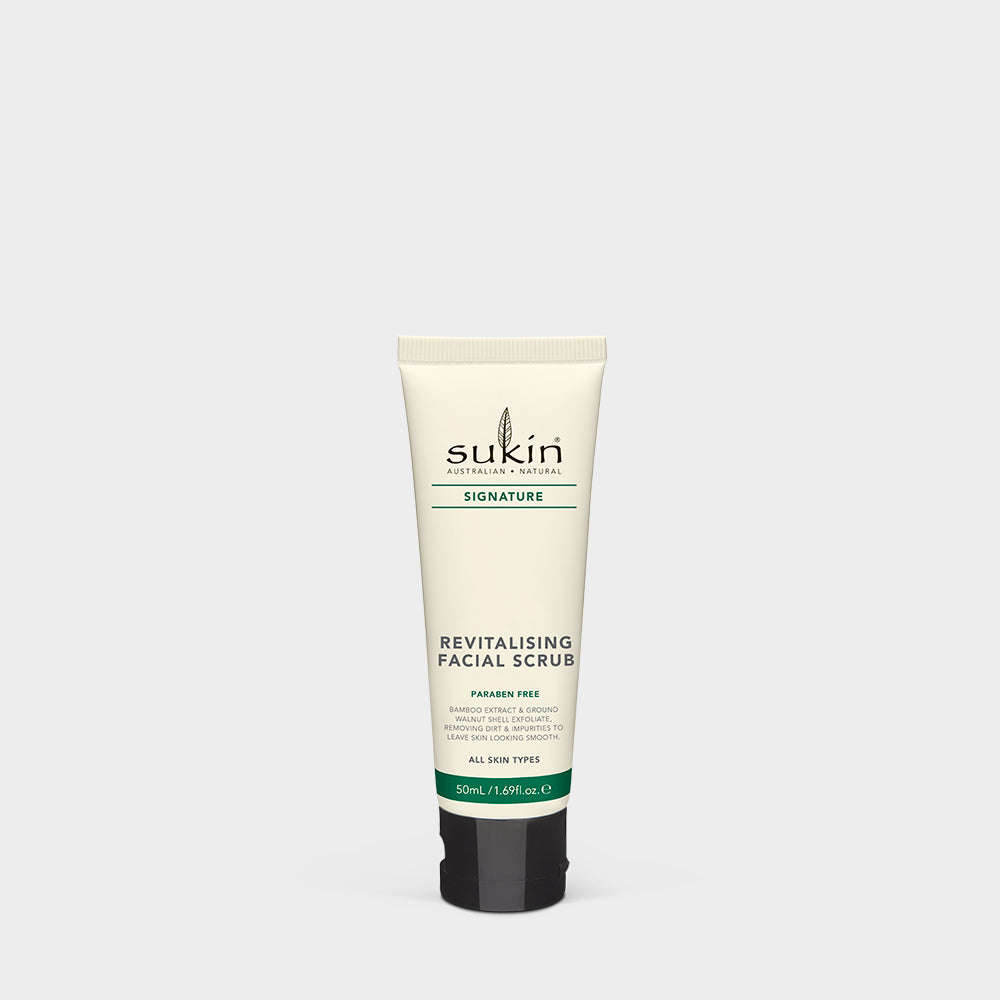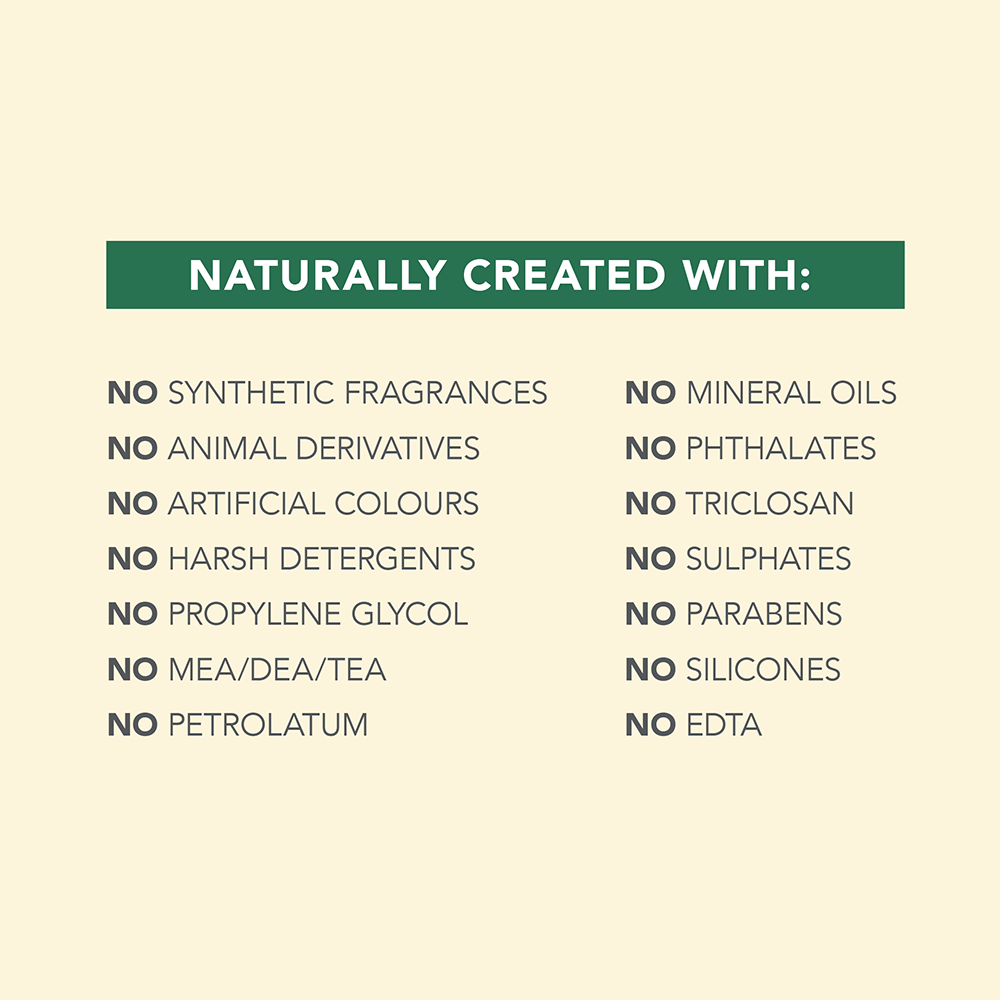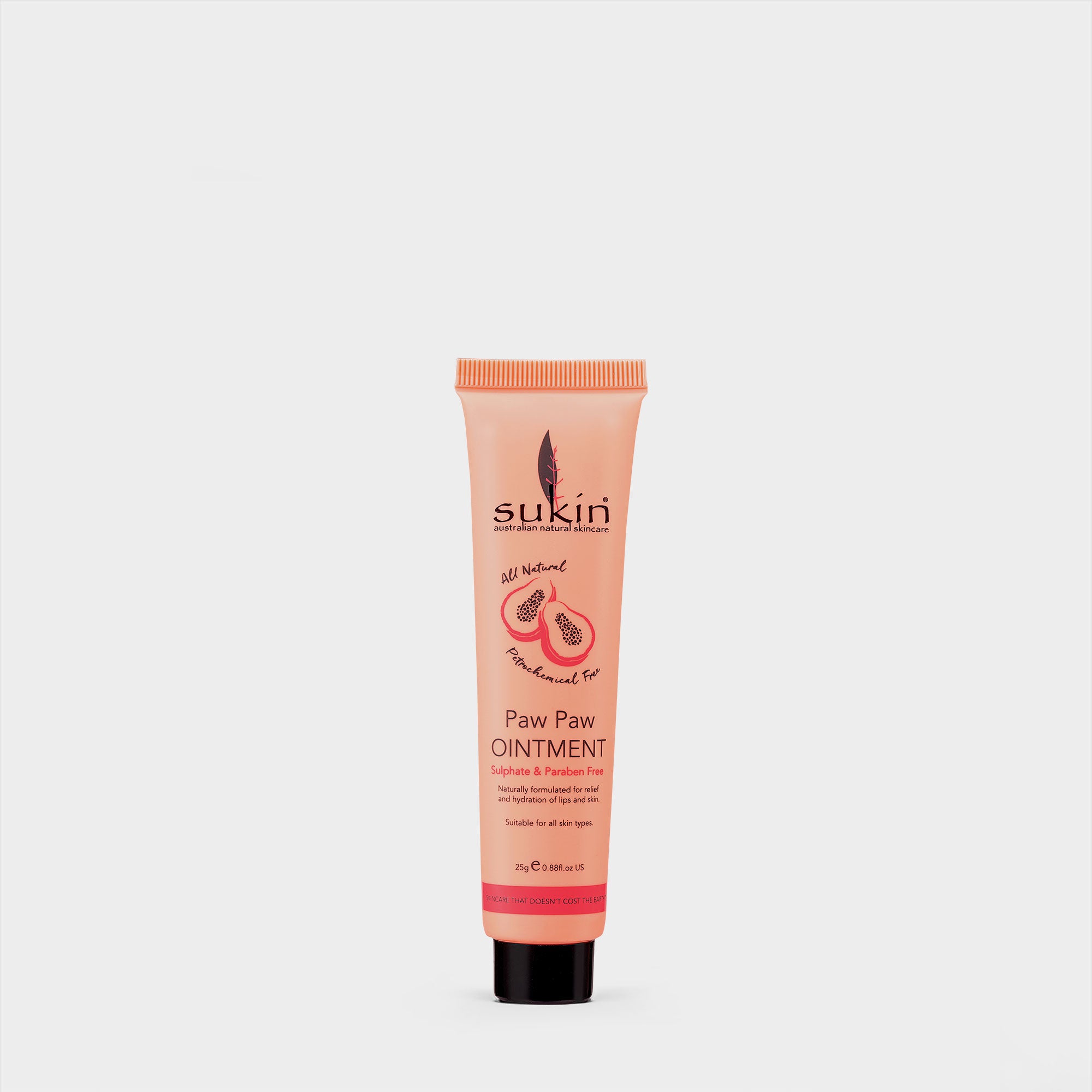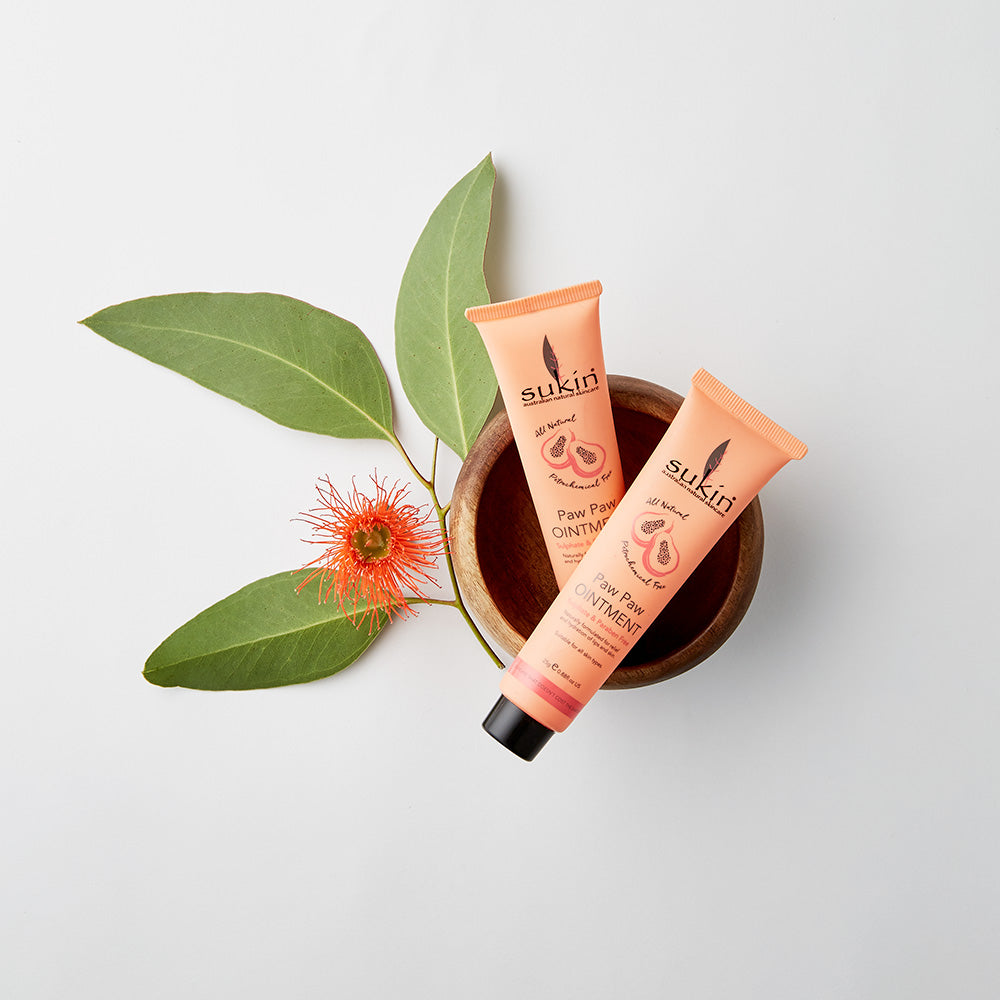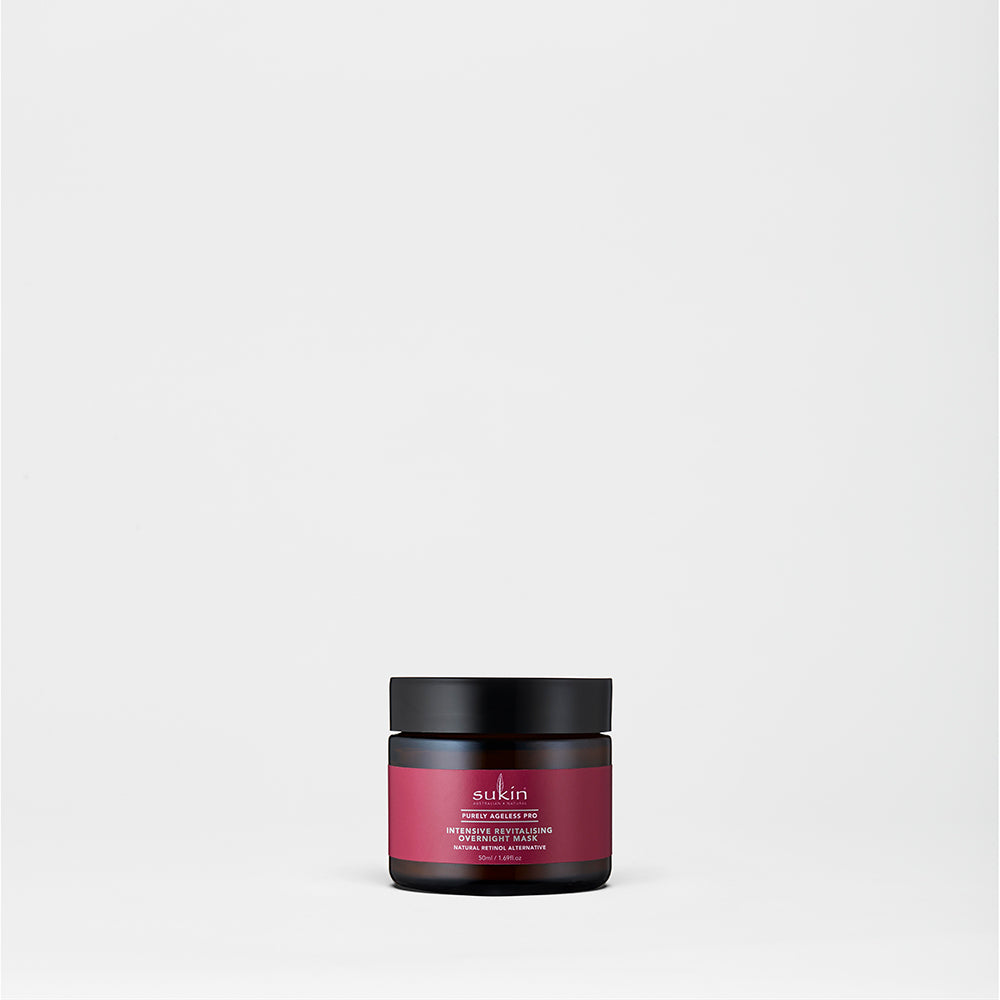The Sukin Journal
Discover the world of natural through our eyes! From skincare tips, lifestyle and environmental hacks to inspirational interviews! Explore it all.
Is Your Sunscreen Hurting the Reef


Growing up in Australia the dangers of sun exposure have been drilled into me from a very young age. From the Slip, Slop, Slap campaign to my mum chasing me around the yard trying to slather me up with sunscreen as soon I set foot outside.
It was annoying as a child, but these days I thank my mum for my (relatively) sun damage free skin and I never leave the house without it. I’ll extoll the virtues of sunscreen to anyone in my immediate vicinity including my long-suffering hubby. Who by the way has amazing skin because of my efforts, no thanks necessary.

I have a long-standing love affair with sunscreen which is why I was more than slightly disturbed to learn that the magic white paste I rave about so much is hurting our coral reefs. It turns out that the chemicals best designed to protect us from potential skin cancer are toxic to coral reefs and contributing to bleaching.
There’s a multitude of reasons for coral reef bleaching, from rising temperatures due to climate change, to pollution from eroding inland areas. However, a 2016 report by forensic ecotoxicologist Craig Downs found a direct link between chemicals found in most sunscreens and coral reef death.
The Issue
The study revealed that about 6,000-14,000 tons of sunscreen end up in reefs worldwide, which can lead to bleaching, damaged DNA and abnormal skeleton growth in coral. Specifically, two of the most popular ingredients in chemical sunscreens — oxybenzone and octinoxate — have been shown to cause significant damage to coral reefs.
‘Two chemicals contained in many sunscreens, oxybenzone, and octinoxate, have significant harmful impacts on Hawaii’s marine environment and residing ecosystems, including coral reefs that protect Hawaii’s shoreline. Oxybenzone and octinoxate cause mortality in developing coral; increase coral bleaching that indicates extreme stress…’ Downs et al., 2015
When you swim with sunscreen on, synthetic ingredients like oxybenzone and octinate seep into the water, where they’re absorbed by corals. The problem is that these ingredients are synthetic organic molecules, like those used to make plastics, that can disrupt coral’s reproduction and growth cycles, ultimately leading to bleaching. Even if you’re not swimming, aerosol sunscreens can end up on the sand, where it’s washed into the ocean and your daily sunscreen can wash down the drain when you shower.
With 85% of Australians living within 50 kilometers of the coastline and Australia containing the world’s largest coral reef, the Great Barrier Reef, it’s an issue that needs addressing. The concern is so serious that Hawaii and marine ecoparks in Mexico are now banning the sale and distribution of sunscreens with those chemicals. The World Economic Forum has even put the issue of sunscreen pollution on its Global Agenda.

A coral reef is a living ecosystem, which protects coastlines and provides habitats for diverse marine life. The coral reef is not only essential to marine life but also provides healthy environments for humans, directly sustaining half a billion people globally. The Great Barrier Reef alone provides over $1 billion per year from tourism. Coral reefs are some of the most diverse and valuable ecosystems on earth – and they need to be protected.
While we’re waiting for more research on the matter and if it will lead to policy change, it’s best to err on the side of caution. Foregoing sun protection altogether to help coral reefs is not an option, so choosing a reef-friendly sunscreen is the next best thing.
Physical vs Chemical Sunscreens
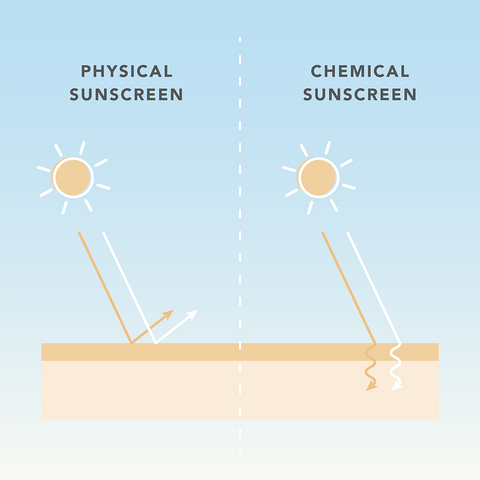
The whole purpose of sunscreen is to block harmful rays from the sun damaging the skin – long wave UVA (ultraviolet A) and short wave (ultraviolet B). Sunscreen works in one of two ways to prevent UVA or UVB rays from the sun damaging cells – physically as a barrier or chemically absorbed.
Chemical sunscreen contains synthetic ingredients that are absorbed under the skin. These chemicals then react with UVA and UVB rays, preventing them from causing damage. Chemical sunscreen has become a popular choice as it comes in a lightweight formula. They also contain oxybenzone and octinate which are the major culprits when it comes to reef damage.
Physical (mineral) sunscreen works as a barrier on the skin against the sun, sitting on the surface. Physical sunscreen is made from titanium dioxide or zinc oxide. Physical sunscreen is generally a bit thicker as it sits on the skin. As the popularity of physical sunscreen has increased, mineral sunscreen products have expanded from thick white paste to lightweight formulas. Sukin’s new Natural Face Sunscreen is non-greasy and doesn’t leave a white cast that so many zinc-based sunscreens do. It’s also reef safe so double win!
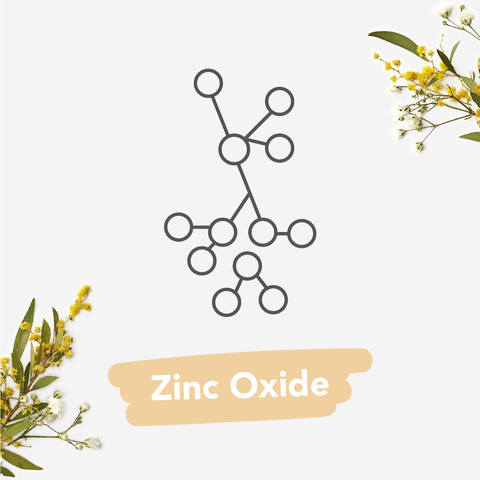
Between the two, Zinc oxide is considered to be the safest and most natural UV reflector when micronized. It’s also the preferred option when it comes to protecting our reefs. Typically, companies will label their products as “reef-safe” but always check the ingredients list to be sure.
*Remember that sunscreen is the last option for sun protection. The Cancer Council recommends avoiding the sun with clothing, hats and glasses.
Kira Simpson is a sustainability activist, climate optimist and founder, and editor of The Green Hub. Her own sustainable living journey began five years ago when she realised our choices matter. What we eat, where we shop, what we wear, how we live, these choices have the power to shape the kind of world we want to live in. Since launching The Green Hub in 2016 she has grown the blog to become a platform for sustainable fashion and conscious living helping people make lifestyle choices which are kinder to the planet.
